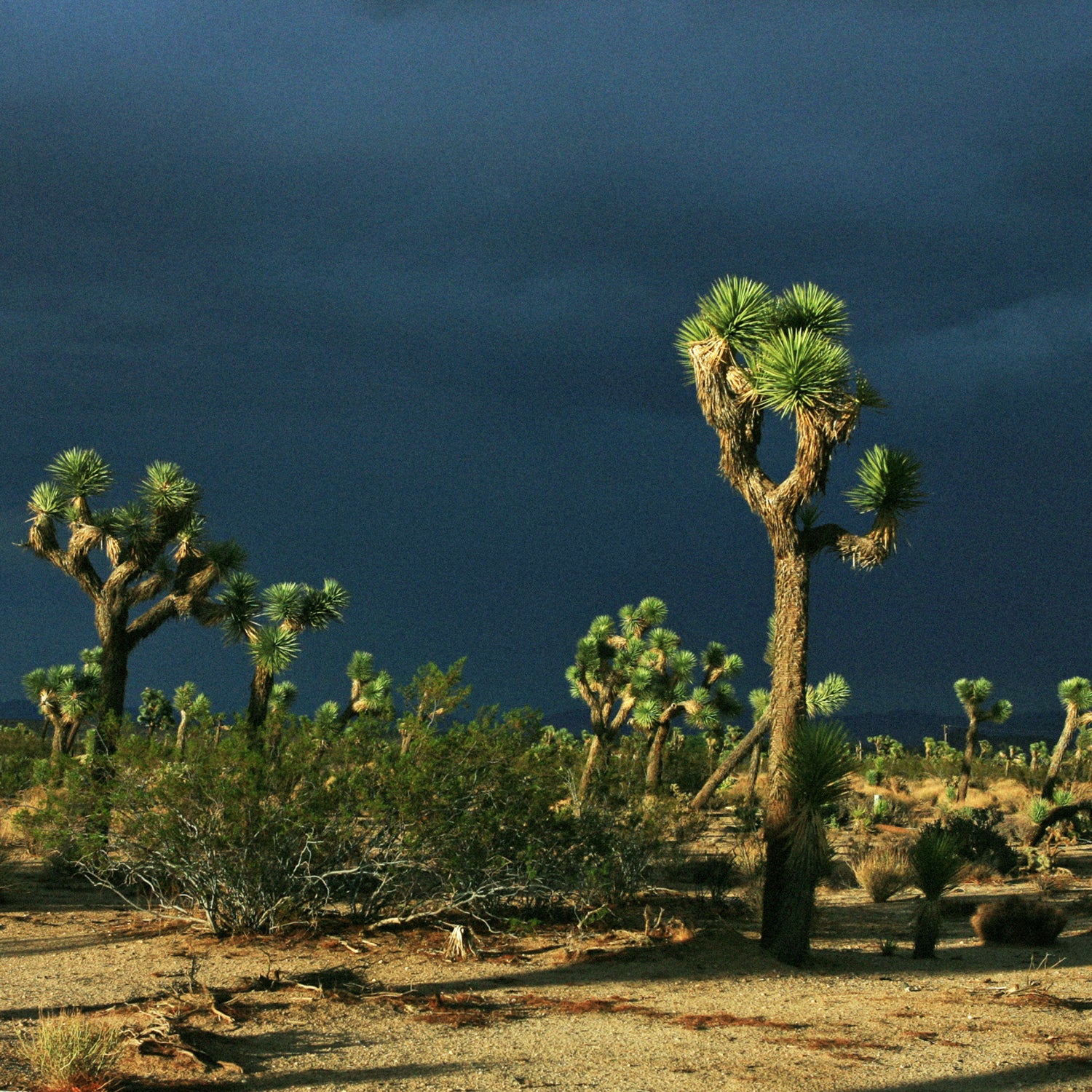Joshua Tree National Park and, to a greater extent, the surrounding Mojave Desert, has always had a morbid vibe. In the early 1900s, it was a lawless place where miners . In the 1960s, Charles Manson plied his followers with acid at nearby Barker Ranch in Death Valley National Park. And not much later, Gram Parson’s buddies out to Joshua Tree and set it all on fire. Death seems drawn to this desert, so it should come as little surprise that bodies are constantly being dug up here.
Five years ago, after the were pulled from the ground, former deputy chief of San Bernardino County Sheriff’s Department , “If there were to be a cross everywhere someone dumped a body, the desert would look like Forest Lawn.”
In the past month, at least two more corpses were dug up within Joshua Tree’s boundaries. The first was skeletal remains, discovered in early May by hikers near Stubbe Spring Loop, a 13-mile trail over fairly difficult terrain. “It was all bones,” says George Land, the park’s public information officer. Forensic specialists investigated the scene, and the remains are now with the Riverside County Coroner’s office until they can be identified. Land says he’s waiting on DNA tests to come back and that there are a few open missing-person cases they think could match. At this point, they’re working on the assumption that the death was accidental. That was certainly not the case with .
The same qualities that have made the desert around Joshua Tree great for a weekend getaway also make it a perfect place to dump a body.
A hiker discovered those remains near Big Horn Pass Road, partially buried about two feet down. “As the gases release and putrefaction sets in,” Land says, “we have a number of scavengers out here, like coyotes and vultures, and they were digging at the lower half.”
As Land points out, bodies don’t bury themselves. So when rangers arrived on scene, they shut down the area while police investigated. The case is now in the hands of Riverside’s Central Homicide Unit.
Two bodies in the span of a month is certainly abnormal, but it’s not shocking. The same qualities that have made the desert around Joshua Tree ideal for a weekend getaway—a combination of ease of access and remoteness—also make it a convenient place to dump a body. The entire Mojave Desert is about 50,000 square miles, and its defining geographic characteristics are the Joshua trees, of course, and its otherworldly desolation. It’s a few hours from any major city, but three interstates connect it to metropolises like Los Angeles, Phoenix, and Las Vegas.
For a long time, the Mojave, though not specifically Joshua Tree, was the rumored cemetery for Vegas mobsters. (As Joe Pesci said in the mafia movie Casino, there are “a lot of holes in the desert, and a lot of problems are buried in those holes.”) No corpses have been found in the Mojave rolled up in carpet recently (), but in 2014, a was strangled by her lover and her body was found dumped at the bottom of an abandoned mine shaft just outside Joshua Tree. Last fall, a couple was found in a remote region of the park, and locked in what seemed to be a last loving embrace as they tried to cool themselves in the shade. It later turned out their deaths were a murder-suicide.
Of course, not all bodies end up in the desert through suspicious means. Like many parks these days, visitation in Joshua Tree is way up. More than 3 million people are expected to fight for its 3,000 parking spots and wander the trails this year—double the visitors from five years ago. Some blame the recent boom on the nearby Coachella music festival and the social media–induced “” syndrome that’s plaguing . (U2 certainly as well.) Meanwhile, staffing in Joshua Tree has remained the same. About 110 paid employees watch over 1,200 square miles of land, some of the hottest in the United States, where it’s easy to become lost in the famous red-stone mounds that give Joshua Tree its Martian look. All those extra visitors mean more people who wander off the trail—and some of them die. In April, a 76-year-old man named David Sewell was lost for three days. Rescuers miraculously found him by overhead. When they spotted Sewell, he was on death’s edge, covered in dirt and curled around a rock.
Sewell was lucky. But as we’ve written here before, about 1,600 other people who’ve gone missing on public land weren’t so fortunate. The thing that sets Joshua Tree and the Mojave apart from all the other places where people disappear, however, is the stunning regularity at which their bodies resurface.


